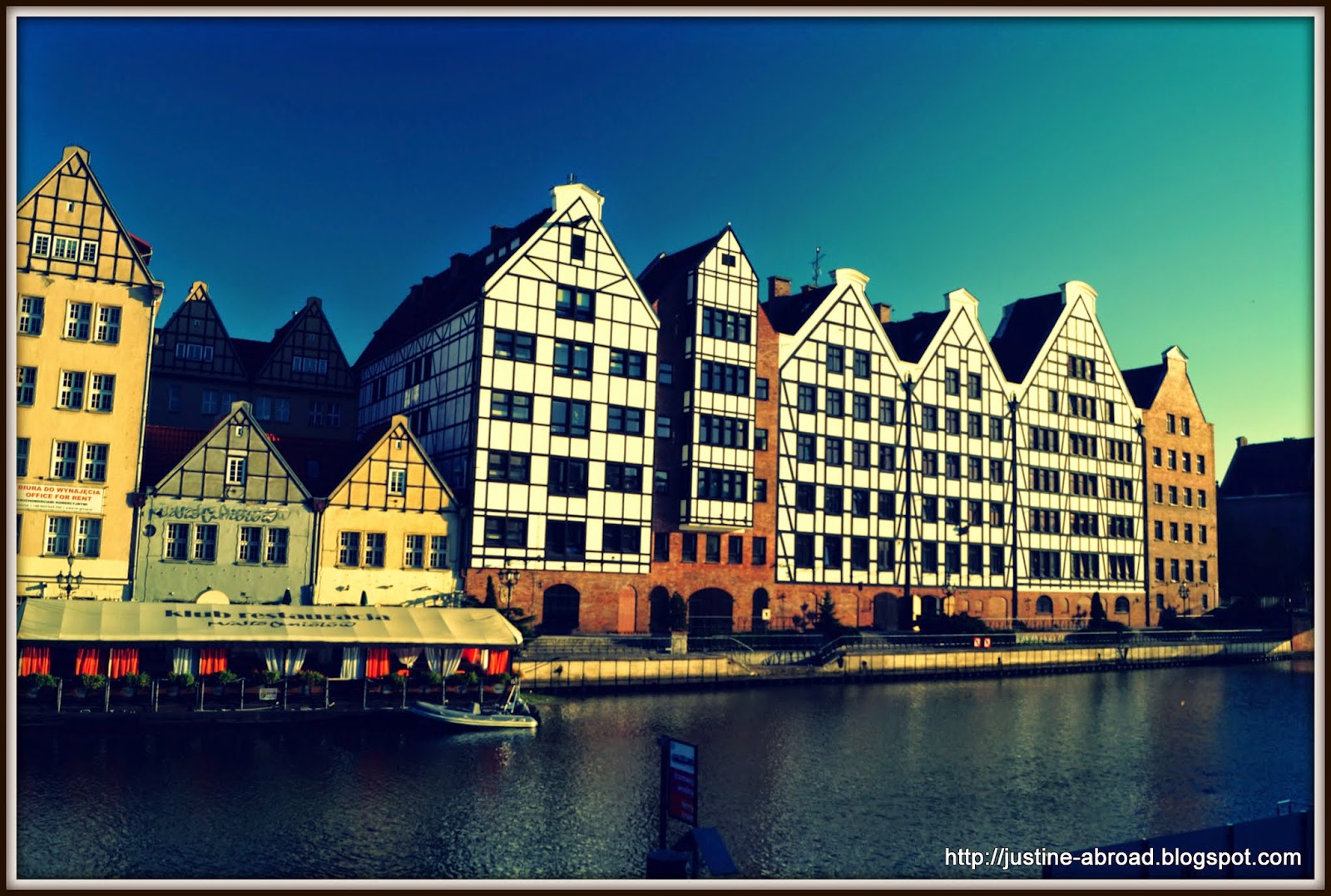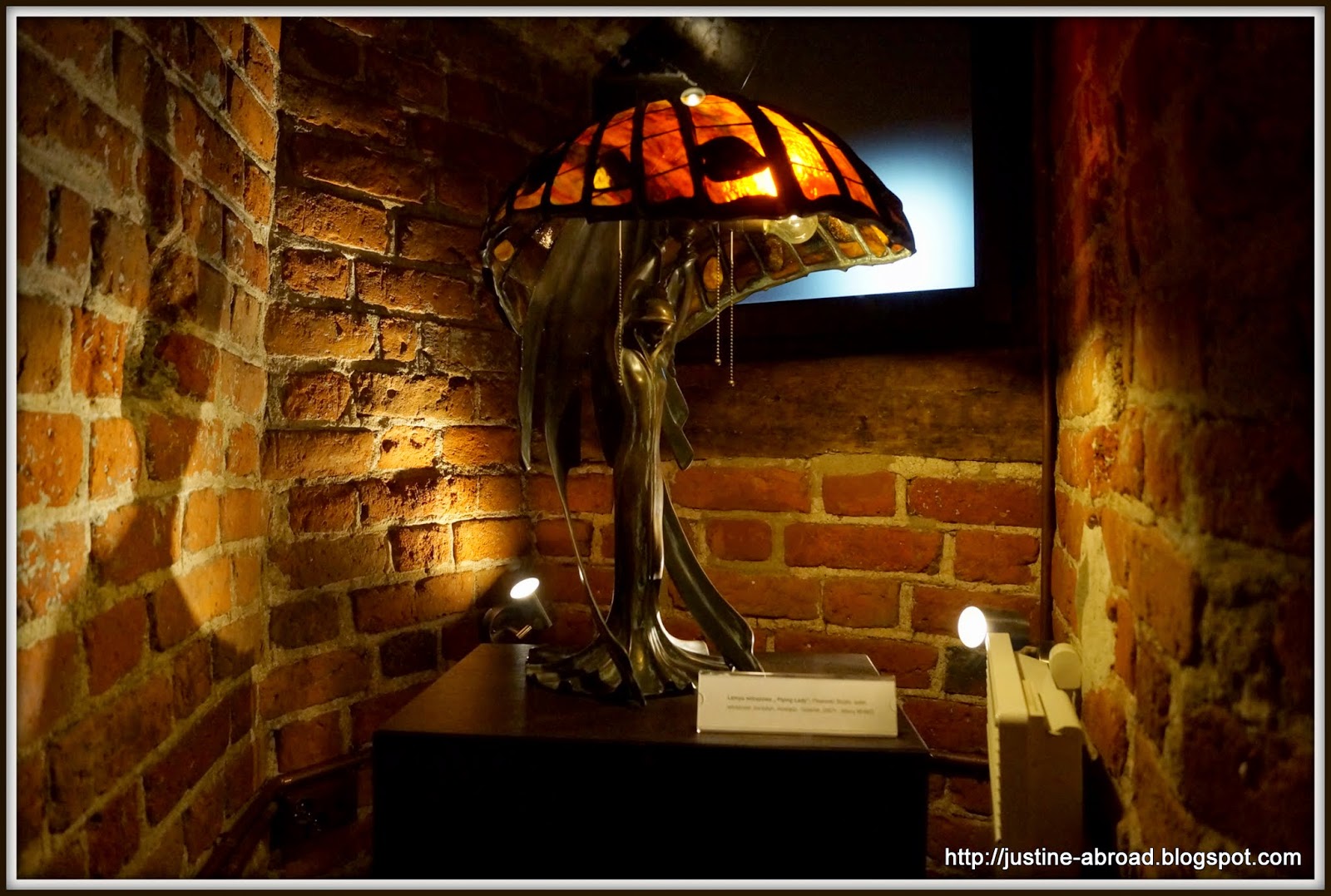What do Polish Gdańsk and Dutch Groningen have in common? Both cities are the capitals of northern regions. You’ll find universities, bridges and historic old towns in both of them. But what will strike you the most is the architecture. It’s not even that surprising, when you realise that they are both Hanseatic cities. Tall and narrow houses, gothic brick churches and towers, impressive Town Halls. However, it seems to me that Gdańsk is a bit more vivid, more colourful, more cheerful.
I
landed already after dark. After I arrived to the centre, I decided to walk the
distance from the Upland Gate (Brama Wyżynna) to my hotel. And that was the best
thing I could do! The evening stroll along Długa Street made me fall in love
with this place immediately. Long rows of colourful buildings, beautifully illuminated.
I always said that Kraków is magical, but at that very moment, Gdańsk stole my heart. I just arrived to the hotel, made myself comfortable in
my cosy, pretty room and I already wanted to be back on the Long Market (Długi Targ). My stomach was also
demanding some attention, so I went out to look for a cute, small restaurant. Although
it was already quite late, I didn’t have much trouble finding a right spot. This
city has so much to offer.
I planned all the sightseeing for the coming two days. The
Old Town, boulevard by the Motława river, the Old Mill… I simply could not stop
taking pictures. Fascinated with everything I see I was not letting my
camera out of my hands. At some point my hands started freezing. I needed to
warm them up and mulled wine in Café Kamienica at Mariacka Street seemed like a
perfect idea. While chilling in this cosy café, I was observing the street
through the window. What an incredible place! It’s a relatively short and
narrow street with wide stairs in front of each house. And along all the
buildings there are tables with stunning amber jewelry. It’s a real amber
paradise!
Before visiting the museums I bought a Tourist Card. It’s a great solution for everyone who is planning to see a bigger number of museums, galleries and/or moving a lot around Tricity. My lovely hotel was situated on the riverside, just few meters away from Granaries on the Ołowianka Island. I started my tour from there. The Granaries are nowadays the main exhibition area of the National Maritime Museum. Besides a big collection of maritime paintings, ship and boat models, you can find a lot of interesting information about sailing and seafaring, but also about Polish history. From the Granaries I took a mini ferry boat to the other riverside. Straight to the Żuraw, an amazing medieval port crane from the fifteenth century.
Before visiting the museums I bought a Tourist Card. It’s a great solution for everyone who is planning to see a bigger number of museums, galleries and/or moving a lot around Tricity. My lovely hotel was situated on the riverside, just few meters away from Granaries on the Ołowianka Island. I started my tour from there. The Granaries are nowadays the main exhibition area of the National Maritime Museum. Besides a big collection of maritime paintings, ship and boat models, you can find a lot of interesting information about sailing and seafaring, but also about Polish history. From the Granaries I took a mini ferry boat to the other riverside. Straight to the Żuraw, an amazing medieval port crane from the fifteenth century.
After
these maritime adventures I moved closer towards the Old Town changing the topic
to bourgeoisie. The enormous building of the Town Hall is a must-see. Its
spectacular interiors will astonish you with incredible decorating details,
fantastic ceilings but also information about the rich history of Poland. The Uphagen’s House on the
other hand shows how the rich citizens of Gdańsk lived years ago. I have to say
that I was slightly disappointed with that last one. Although the Uphagen
family came to Gdańsk from Flanders, there were no Dutch nor Belgian elements. From the House it's only a few
meters to another interesting museum - the Amber Museum. Which also is a must-see. After
all, amber is called the “the Baltic sea gold”. It fully deserves this
name. The things people can make with amber are simply stunning.
I was
just about to call it a day, when I quite accidentally ended up by the
entrance gate of the Gdańsk Shipyards. Since I was already there, I decided
that I have to see the European Solidarity Centre. The new exhibition area has been opened only a few months ago. All the displays are dedicated to the history of the Solidarity movement, which led to democratic transformations in Poland and the whole of Central-Eastern
Europe. I was never really interested in history nor politics, but I have to
admit, that this place made a great impression on me. The events so important
for my country are perfectly documented and presented in a very interesting
way. I will definitely have to come back here with Maurice. And I’m pretty sure
that he will not want to leave the Centre.
Gdańsk
has a lot to offer to its visitors. Not only the museums, galleries and monuments though.
If you want to read about other attractions, check my blog again soon.

























Brak komentarzy:
Prześlij komentarz